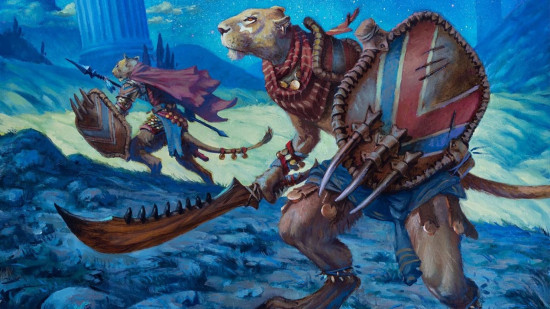Wizards of the Coast just revealed its 2025 roster of Dungeons and Dragons books, and one product was a clear standout star. Well, technically two products, as D&D is due to release a two-book deep dive into its Forgotten Realms setting. These guides could give us something that’s been seriously lacking in modern D&D – a truckload of lore.
Generally, fifth edition has done its world-building in the background. Adventures like Curse of Strahd or Descent into Avernus use introductory chapters and gazetteers to explain key characters and locations, with stat block descriptions and story beats filling in blanks along the way. Supplements like Fizban’s Treasury of Dragons primarily offer new player mechanics, but they squeeze in a little history and roleplaying advice at the margins.
This approach has always felt sparse. When preparing for my own Curse of Strahd campaign, I turned to novelizations and community DnD homebrew to fully flesh out the demiplane of Barovia. Pre-written narratives always seemed to have holes, and Wizards of the Coast rarely released setting books that could help plug the gaps.
This issue has only grown worse in the decade since fifth edition began. Compare, for example, Volo’s Guide to Monsters and Monsters of the Multiverse. The second of these books was intended to replace the first, as it updated many of the DnD races found in Volo’s Guide.
One of these updated species was the Tabaxi 5e. Volo’s Guide to Monsters includes nearly 1,400 words on these feline humanoids, and this includes everything from Tabaxi naming conventions to common personality traits. Monsters of the Multiverse spends less than 400 words introducing the Tabaxi. Most of this covers the rules you’ll need for your DnD character sheet.
Early fifth edition books gave the game’s DnD settings far more breathing room. DnD books like the Sword Coast Adventurer’s Guide were prepared to give serious page space to storytelling.
In recent years, Dungeons and Dragons has abandoned this, favoring a ‘breadth not depth’ approach. Campaigns like Vecna: Eve of Ruin and Planescape 5e offer whistle-stop tours of multiple locations, and none of the places you visit get the attention they deserve. Playing these games feels like being on a cruise that only gives you one hour to explore each country you dock at.
To make matters worse, D&D’s 50th anniversary has opened the floodgates for a wave of nostalgia content. Vecna, Planescape, and Dragonlance all returned to D&D recently.
These people and places have a small army of novels, supplements, and videogames that explore their lore, but the new D&D books offer little more than a cursory summary of each. Despite Wizards of the Coast asserting otherwise, it feels like you’re expected to know who and what these legacy icons are before you pick up their books.
The 2024 Player’s Handbook further demonstrates this mentality. The beginner-focused rules are illustrated with art and examples of play, and every one references (or in some minor cases, spoils) a character or campaign of D&D past. These are a neat Easter Egg for dedicated fans, but newcomers will be ignorant at best.
I can understand why Wizards of the Coast dedicates less time, space, and money to lore. A large portion of the player base prefers to run games in their own fantasy worlds, and another large portion only wants to invest in rules they can actually use. Selling successful products means squeezing maximum value into the smallest package, and that’s not a formula that encourages rich, meandering worldbuilding.
There’s still a market for lore, though. The community response to the Forgotten Realms Player’s Guide and the Forgotten Realms Campaign Guide make this clearer than ever. Many D&D players are still hungry for lore, and they’ve been left wanting for a long time.
For more Dungeons and Dragons updates, check out our complete DnD release schedule guide. Or, for rules you can use all-year-round, here’s everything you need to know about DnD classes.
Source: Wargamer




